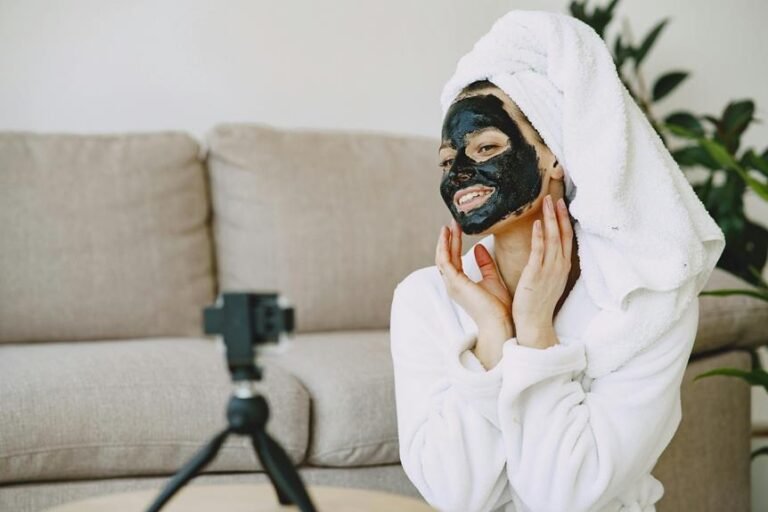How to Mount Blink Outdoor Cameras – Outdoor Installation Guide
Get started on mounting your Blink Outdoor cameras by choosing the perfect spot with no obstacles and good visibility. Grab your tools—screwdriver, level, drill, and sealant—and make sure they're ready to roll. Connect the Camera Sync Module as your control center and pair your cameras like a pro. When mounting outdoors, secure the camera snugly, consider weather protection, and tweak those angles just right. Connect to Wi-Fi, test functionalities like live feeds and night vision, and you're good to go for excellent security. Follow these tips for a seamless Blink Outdoor camera setup!
A Quick Overview
- Securely mount cameras outdoors for optimal coverage.
- Utilize weatherproofing techniques for durability.
- Ensure stable bracket installation for clear views.
- Adjust camera angles strategically for best surveillance.
- Test functionality including live feeds and motion detection.
Checking Camera Placement
During the installation of your Blink Outdoor cameras, it's important to carefully evaluate the placement of each camera to ensure optimal coverage. Make sure that the cameras have a clear line of sight, avoiding any obstacles such as trees or walls that may obstruct the view.
It's also advisable to consider weather protection measures by placing the cameras under eaves or using protective covers. By strategically positioning your cameras, you can capture high-quality footage and safeguard them from inclement weather conditions.
Gathering Installation Tools
Before installing your Blink Outdoor cameras, make sure you have the following tools ready:
- Screwdriver for securing brackets
- Level to ensure straight alignment
- Drill for mounting on different surfaces
- Silicone sealant for weatherproofing the cameras
Setting Up Camera Sync Module
Enhance your camera connectivity with the Camera Sync Module serving as a central hub. Troubleshooting with the Sync module is made easy thanks to Blink's intuitive setup.
Enjoy flexibility with a range of power source options to choose from. Pairing cameras is a simple process – just follow the on-screen instructions.
This setup ensures that your Blink Outdoor Cameras work seamlessly together, providing you with peace of mind and surveillance over your outdoor area.
Mounting Cameras Outdoors
Ensure the camera mount is tightly secured to ensure proper installation.
Implement weatherproofing techniques for extended outdoor surveillance durability.
Opt for strategic security camera placement to maximize coverage.
Verify the stability and security of mounting brackets.
Fine-tune camera angles for optimal viewing.
Adjusting Camera Angles
To ensure optimal coverage and visibility for your outdoor surveillance requirements, it's essential to fine-tune the camera angles. Correctly adjusting the angle is crucial to capturing all the action effectively. Experiment with various positions to achieve the best results.
In addition, consider implementing weatherproofing techniques to safeguard your camera from environmental elements. Striking a balance between security and convenience involves adjusting the angle and ensuring the camera is secured against harsh weather conditions.
Connecting Cameras to Wi-Fi
To ensure your Blink Outdoor cameras are properly set up, it's essential to have them connected to your Wi-Fi network for remote access and monitoring.
- Double-check that your Wi-Fi password is accurate.
- Position the cameras within the Wi-Fi range for optimal connectivity.
- If encountering connection problems, try restarting both the cameras and the Wi-Fi router.
- Enhance network security by utilizing a robust password and activating encryption for increased protection.
Testing Camera Functionality
After confirming that your Blink Outdoor cameras are successfully connected to your Wi-Fi network, it's important to test their functionality to ensure they're working correctly.
Test your camera by checking the live feeds, motion detection, and night vision capabilities. Addressing any connectivity issues early on can help prevent future disruptions.
Remember to employ weatherproofing measures to maintain your cameras and ensure they're ready to capture outdoor activities effectively.
Frequently Asked Questions
How Do I Protect My Outdoor Cameras From Extreme Weather Conditions?
To shield your outdoor cameras from harsh weather, explore weatherproofing options like protective covers. These solutions safeguard your devices from rain, snow, and sun exposure, ensuring they function efficiently regardless of the elements they face.
Can I Install Outdoor Cameras Without Drilling Holes in My Walls?
Yes, you can install outdoor cameras without drilling holes in your walls. Consider using magnetic mounts or adhesive solutions for easy setup. Explore camouflage options and alternative placements for flexibility in securing your cameras discreetly.
What Is the Optimal Height for Mounting Outdoor Cameras?
For ideal camera placement, consider sightlines and angles when mounting outdoor cameras. Position them at a height of 7-9 feet for the best coverage. Adjust for specific needs, ensuring a clear view while maintaining security.
How Can I Extend the Wi-Fi Range for My Outdoor Camera Setup?
To extend your outdoor camera setup's Wi-Fi range, consider positioning tips and using signal boosters or range extenders. Opt for wireless options to maximize coverage and flexibility. Move devices around to find the best reception spots.
Are There Any Additional Accessories Needed for Outdoor Camera Installation?
To set up your outdoor camera, you may consider camera covers to shield it from elements and a weatherproof housing for extra protection. These accessories can enhance durability and security for your outdoor camera installation.







